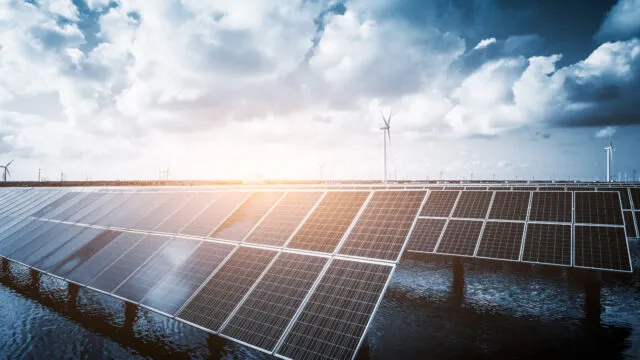As a core part of China’s efforts to generate higher-quality and more sustainable domestic growth, Beijing’s policy pledge to drive a green economy is expected to lure increasing amounts of capital into new and emerging sectors.
“This is the first-ever focus on environmental issues in China’s Five-year Plan, which should also give the economy a boost,” said Sean Taylor, chief investment officer for DWS in APAC.
In addition to prioritising a low-carbon future in the coming decades, the 14th Five-year Plan – approved at the National People’s Congress in March – is focused on expanding digitalisation and e-commerce, as well as on pivoting away from exports towards domestically-led growth.
Although more detailed regional and sector-specific 14th Five-year Plans are not expected until late 2021 or early 2022, Taylor has identified five key investment themes that investors can expect to capitalise on in line with the main objectives:
1. Alternative energy sources to flourish in the current climate
With high investment and fast development in China’s electric vehicle and clean energy alternatives space, Taylor said the goal that by 2025 every fifth new car registered in China will be electric is “not far-reaching”.
2. De-carbonisation to reshape the industries with high climate transition risk
China contributes about 30% of carbon emission globally, with up-stream sectors such as steel, PVC and coal accounting for a large part of carbon emission.
“Moving ahead, we believe companies with low carbon/carbon efficient business models should benefit as the economy shifts toward lower carbon emission and places more focus on fighting against climate change,” Taylor said.
3. Digitalisation to spur China’s structural growth
China already boasts an impressive ratio of digitisation to productivity compared with the US or Europe. Beijing has also increased its budget allocation towards new infrastructure projects such as base stations and energy grids.
“[This] should support further growth in China’s fast growing new economy sectors such as 5G, e-commerce and electric vehicles,” said Taylor.
4. Urbanisation and improving household income to fuel domestic economic growth
On the supply side, there is large-scale investment and government support for China’s goal to reduce its dependence on foreign economies, especially in strategically important areas such as semiconductors. For example, A National Integrated Circuit Industry Investment Fund, also named the “Big Fund”, has been set up.
“The aim,” said Taylor, “is to promote self-reliance in high technology sectors, and especially to develop a domestic semiconductor ecosystem.”
5. Strong support for Chinese semiconductor suppliers
As a result of challenges in the sourcing of production equipment due to US-China trade tensions, Taylor forecasted that strategically important sectors in China should benefit from strong government support and preferential treatment in the local market.
The boom in the country’s internet sector is evidence of this potential, he added.

















